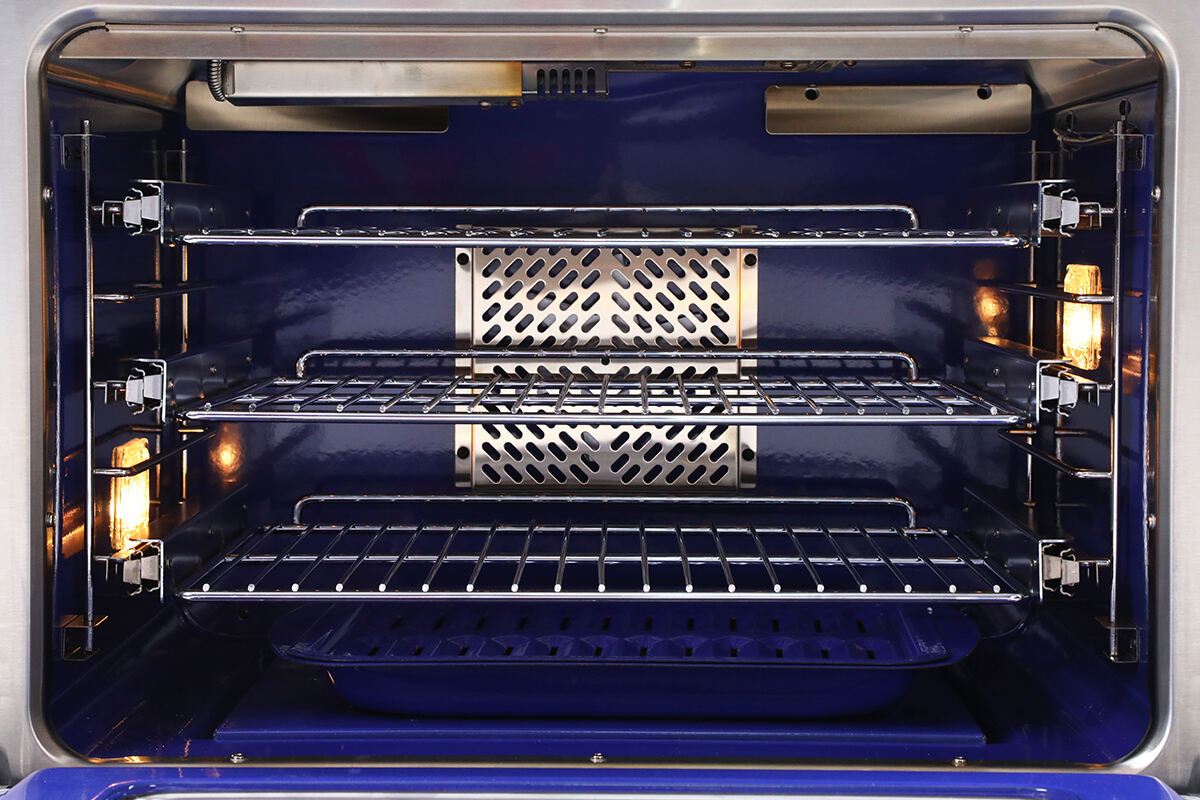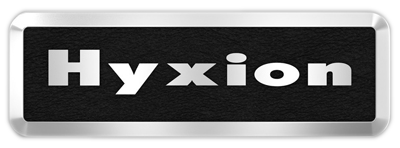Convection Bake vs. Bake – A Complete Guide
As more home cooks look for ways to elevate their baking and roasting skills, convection ovens have become a popular choice. These ovens offer a unique feature: a fan that circulates hot air, promising faster and more even cooking compared to traditional ovens. However, understanding when to use convection baking versus regular baking can be a game-changer for your cooking results. In this guide, we’ll explore the key differences between convection and traditional baking, helping you decide which method is best for everything from crispy vegetables to delicate cakes.
Convection Bake vs. Bake – A Complete Guide
What is the main difference between convection roasting and baking?
Some popular uses of convection baking include:
Key Benefits of Convection Baking
Drawbacks of Convection Baking
Best Uses for Traditional Bake
Limitations of Traditional Baking
Comparing Convection Bake and Traditional Bake
Temperature and Timing Adjustments
Practical Tips for Using Convection Baking
When to Choose Convection Bake vs. Traditional Bake
What is the main difference between convection roasting and baking?
Convection baking circulates hot air evenly through the fan for faster, even cooking. Conventional baking, on the other hand, uses top and bottom heat for foods that need to be heated more slowly and evenly, such as cakes and breads.
What is Convection Baking?

Convection baking uses a fan and an exhaust system to move hot air around the oven. This constant airflow helps heat reach all parts of the oven and ensures that food cooks faster and more evenly. For example, if you're roasting vegetables or baking multiple trays of cookies, convection baking can help achieve crispy edges and uniform results without having to rotate the trays as often.
Some popular uses of convection baking include:
- Roasting meats and vegetables for a crisp outer texture.
- Baking cookies or pastries on multiple racks without uneven browning.
- Cooking frozen foods more quickly and evenly.
How Convection Bake Works
The main difference between convection baking and regular baking is the fan. In convection mode, the fan constantly circulates hot air around the oven, pushing heat to every part of the oven cavity. The exhaust system removes extra moisture, so food cooks faster and can get a crispy outer layer.
Key Benefits of Convection Baking
1. Faster Cooking Times: The airflow speeds up cooking, often reducing cook times by up to 25%. This can be helpful for busy families who want meals prepared faster.
2. Even heating: The fan pushes heat around the oven, cooking food more uniformly and eliminating the risk of over- or undercooking.
3. Perfect for Crispy Textures: Convection baking is the best way to roast meats, toast nuts, or bake items that need a crispy texture, like roasted vegetables and cookies.
Drawbacks of Convection Baking
1. Risk of Drying Out Food: The fan can and will dry out certain dishes, especially delicate ones like cakes or custards, which require moisture.
2. Over-browning is a common issue with convection ovens. Foods may brown too quickly, leading to burning if the oven temperature or time isn't adjusted.
3. This method is not suitable for all recipes. In particular, baked goods that require a specific rise (such as cakes or soufflés) may be negatively affected by the airflow and additional heat.
What is Traditional Baking?
Traditional baking, or regular baking, uses only the oven’s top and bottom heating elements and evenly without the assistance of a fan. This type of heating works slower than convection, but it’s often better for delicate recipes. Traditional baking allows for gentler heat distribution, which can prevent cakes and bread from drying out or collapsing in the middle. It’s ideal for:
- Cakes, bread, and other baked goods that need a stable, slow heat to rise.
- Dishes with a lot of moisture like casseroles or lasagna that require longer baking times.
- Custards and other delicate foods that could overcook or burn with too much airflow.
How Traditional Bake Works
With traditional baking, the heat simply rises from the oven’s heating elements and warms the entire cavity. Since there is no fan to move the air around, the heat may be more intense at certain points, particularly near the heating elements. This slower heat distribution is ideal for foods that need a gentle rise or those that could dry out with rapid airflow.
Best Uses for Traditional Bake
1. Cakes and Pastries: These delicate items benefit from the gentle and even heating of traditional baking, which helps them rise and stay moist.
2. Breads and Casseroles: These dishes need to cook slowly and uniformly, so the steady heat of traditional baking works well.
3. Moist Dishes: Foods with high moisture content, like casseroles or lasagnas, can benefit from traditional baking, which preserves their texture and avoids over-drying.
Limitations of Traditional Baking
1. Uneven Cooking: Since there’s no airflow, some areas in the oven may be hotter than others, leading to uneven baking, especially if food is on multiple racks.
2. Longer Cooking Times: Traditional baking takes more time, so it’s less energy-efficient than convection.
3. Limited Capacity: Cooking multiple trays of food at once may lead to uneven results because hot air isn’t circulating.
Comparing Convection Bake and Traditional Bake
Knowing when to use convection or traditional baking can help improve your cooking results. Here’s a breakdown of temperature and timing adjustments, examples of food types for each method, and a pros and cons summary table.
Temperature and Timing Adjustments
When using convection baking, the oven’s fan circulates hot air, making cooking faster and more intense. Generally:
- Lower the Temperature: Reduce the oven temperature by about 25°F. So, if a recipe calls for 350°F on a traditional bake setting, set the convection to 325°F.
- Shorten the Cooking Time: Check the food about 10–15 minutes earlier than the suggested cooking time, as convection can speed up cooking by about 25%. For example, cookies that normally take 20 minutes may be done in about 15 minutes on convection.
Food Types for Each Method
Certain foods work better with each type of baking setting:
Convection Bake: This method is ideal for foods that benefit from faster, even cooking and a crispy texture. Common examples include:
- Roasted meats and vegetables: These foods develop a deliciously crisp outer layer while remaining juicy inside.
- Cookies and pastries: Multiple trays of cookies can bake evenly without needing to rotate the pans.
- Frozen foods: Items like frozen fries or pizzas can be quickly cooked to a golden-brown finish.
- Traditional Bake: This is best for dishes that need steady, gentle heat to avoid drying out, such as:
- Cakes and delicate desserts: These items need even, slow cooking to rise well and retain moisture.
- Bread and muffins: The steady heat allows these foods to rise uniformly without becoming overly browned.
- Casseroles: Moist, layered dishes like lasagna bake well with traditional heat to maintain texture.
Pros and Cons Summary Table
| Convection Bake | Traditional Bake | |
| Pros: | Faster cooking, even heat distribution, crispy textures, saves energy | Ideal for delicate, moist dishes, gentle heat for even rising |
| Cons: | Can dry out or over-brown certain foods, some recipes need adjustments | Slower cooking, may lead to uneven results on multiple racks |
| Best For: | Roasted veggies, meats, cookies, and frozen foods | Cakes, breads, muffins, and casseroles |
Practical Tips for Using Convection Baking
Switching from traditional to convection baking may require some adjustments, especially for recipes written for standard ovens. Here are some practical tips:
When to Choose Convection Bake vs. Traditional Bake
To decide whether to use convection or traditional baking, you can refer to this simple decision guide based on the type of food, desired texture, and cooking time. Choosing the right setting will help you achieve the best possible results for each dish.
Quick Decision Guide
- For Crispy or Browned Foods: If you want a crisp exterior, convection is ideal. The circulating hot air helps create a crispy texture for roasted vegetables, meats, and pastries. For example, roasted potatoes and baked cookies often turn out better with convection since they develop an even, golden-brown finish.
- For Delicate Baked Goods: Traditional baking works best for soft, delicate foods that need slow, gentle heat to rise evenly, such as cakes, custards, and breads. With traditional baking, you’ll avoid over-browning, which can happen quickly in convection mode. For example, cakes and muffins bake up soft and fluffy with traditional baking.
- For Moist Dishes and Casseroles: Casseroles and layered dishes with high moisture content, like lasagna, benefit from traditional baking. The steady heat lets the flavors blend slowly without drying out. Traditional bake is also preferable for dishes that require a specific amount of moisture to cook evenly.
- For Faster Cooking Times: If you’re looking to speed things up, convection’s fan system will reduce cook time by around 25%. For busy weeknights, convection can be a time-saver for foods like sheet-pan dinners, frozen foods, and any item you’d like to cook faster without sacrificing quality.
Application Examples
1. Cake – Use traditional bake for a gentle rise and moist texture.
2. Casserole – Use traditional bake to retain moisture and allow flavors to blend.
3. Roasted Vegetables – Use convection bake to achieve a crispy, even browning.
4. Cookies – Convection bake is ideal, as it ensures cookies on multiple trays bake evenly.
5. Bread – Traditional bake provides the slow, even heat that allows bread to rise fully without over-browning.
Conclusion
In summary, understanding the differences between convection and traditional baking can help you achieve the best results for any recipe. Convection baking works well for foods that need a crispy finish and faster cook time, while traditional baking is ideal for delicate items that need steady heat. By choosing the right method, adjusting recipes, and experimenting, you can make the most out of your oven and cook a wider variety of delicious meals.
With the right approach, you’ll find that both convection and traditional baking methods have a place in your kitchen, giving you flexibility and control over the outcome of your dishes.

 EN
EN
 AR
AR
 BG
BG
 HR
HR
 CS
CS
 DA
DA
 NL
NL
 FI
FI
 FR
FR
 DE
DE
 EL
EL
 IT
IT
 JA
JA
 KO
KO
 NO
NO
 PL
PL
 PT
PT
 RO
RO
 RU
RU
 ES
ES
 SV
SV
 TL
TL
 IW
IW
 ID
ID
 LV
LV
 LT
LT
 SR
SR
 SL
SL
 SQ
SQ
 HU
HU
 MT
MT
 TH
TH
 TR
TR
 FA
FA
 MS
MS
 GA
GA
 IS
IS
 HY
HY
 AZ
AZ
 KA
KA
